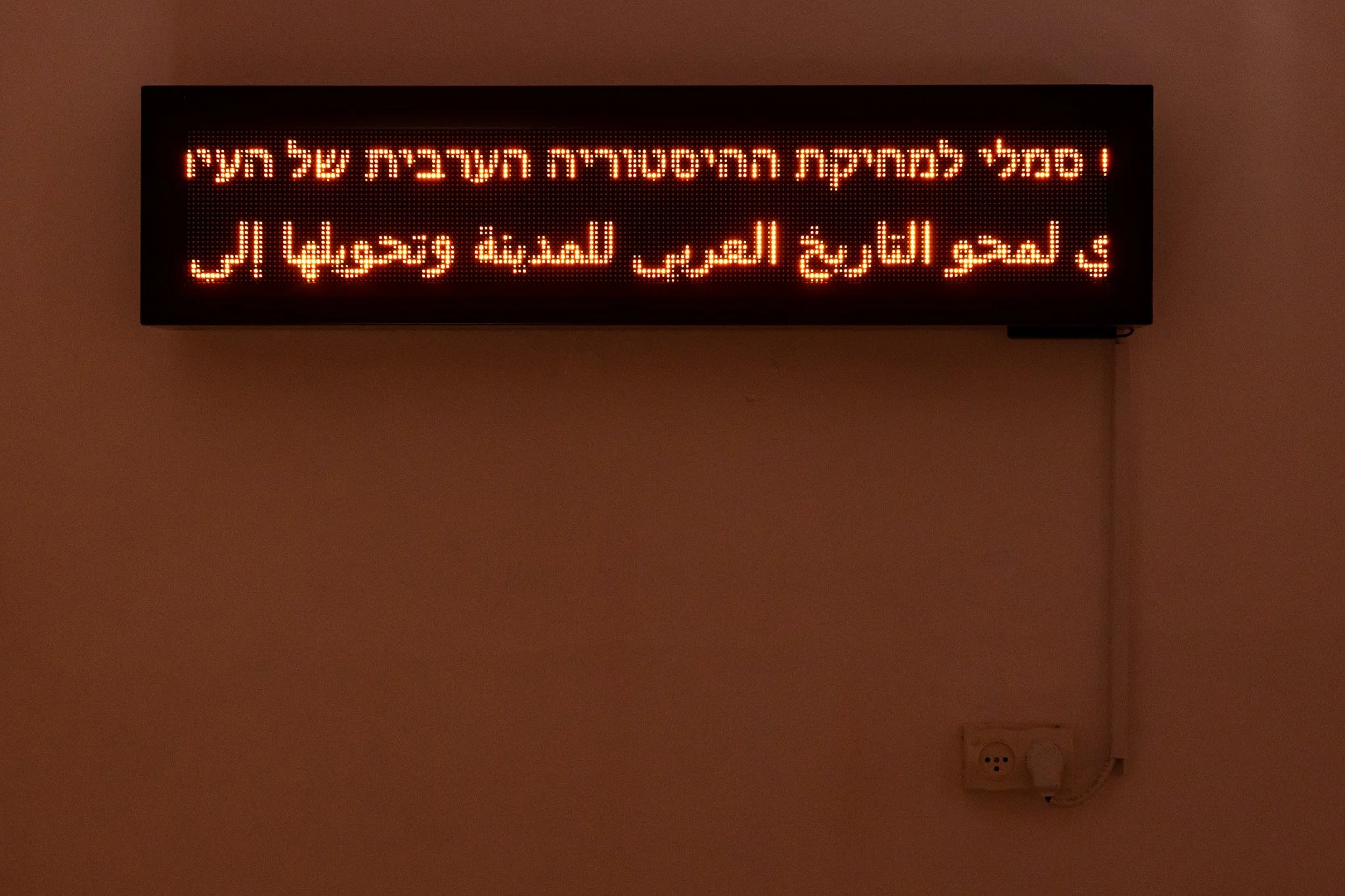
BEFORE THE TRAIN
sept-OCT 2022
Solo Exhibition: Tal Kronkop
WELl’s house, Jaffa
Though the train is a symbol of progress and development, it encroaches, at the same time, on other forms of life, takes over the space and reshapes it. Tal Kronkop's solo exhibition dwells on this tension and is located in a liminal moment in time, before the arrival of the light rail to Jaffa. The train actually continues the line of reporting facts on the ground to the city's residents, such as the establishment of Jerusalem Boulevard itself in 1915. The boulevards were actually created as a project of the Ottomans, who forced Jews and Arabs alike to build the boulevards quickly in order to facilitate movement in Jaffa and give it a Parisian look. The famous boulevards of Paris, designed by Baron Haussmann, were also supposedly intended to give an aesthetic and orderly appearance to the city. In practice, they were intended to be used by the army for efficient movement and to eliminate any possibility of rebellion. Avenues are actually created with the aim of neutralizing barricades: rebels can no longer build walls to take over a part of the city, when the army can easily reach them from another avenue. Those responsible for the branding of the light rail project correspond in their way with this historic move and claim that their goal is to transform Jerusalem Boulevard into a "vibrant, renewed and progressive public space ... inspired by the most beautiful cities in the world." Though Jaffa, isn’t it endowed with its own unique beauty? What does the modernization of Jaffa serve? Which identity will be erase in favor of the European image that will replace it?
The light rail project does indeed guarantee faster and more efficient mobility in the urban space, which is currently suffering from overload. The city is full of excessive traffic of private means of transport (bicycles, scooters and other motorized phenomena), which make their way between failed infrastructures and too often collide with each other. But doesn't the fast movement of a massive vehicle, no matter how new and shiny, threaten those who wish to live at a different, slower and gentler pace? Kronkop offers us a "softer" view of Jerusalem Boulevard, and unfolds before us a space in which there are many layers and tangles of movement, some of them agile and purposeful, and some of them "inefficient", dragging and dreamy. Through documentation techniques, between video and performance, she seeks to observe the boulevard and the tensions embodied in it since its inception, just before it changes its skin. Through an implicit use of museum display modes, she creates images in space that accumulate almost into an act of commemoration. Before the train invites us to pay our last respects to the present reality, before its past-present is erased and replaced by one element, too conspicuous to the eye, that will occupy the avenue and overshadow it with its presence.
credit: Daniel Hanoch
credit: Daniel Hanoch
credit: Daniel Hanoch
credit: Daniel Hanoch



